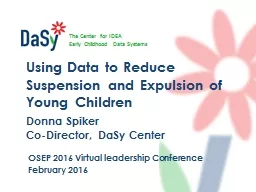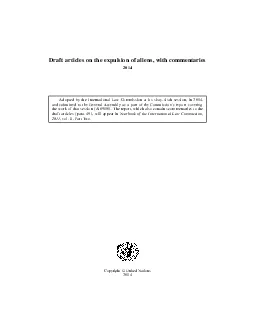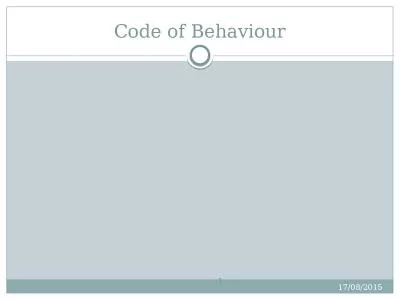PPT-Using Data to Reduce Suspension and Expulsion of Young Children
Author : alida-meadow | Published Date : 2018-11-01
Donna Spiker CoDirector DaSy Center OSEP 2016 Virtual leadership Conference February 2016 2 Having data can help you answer critical questions Are certain programs
Presentation Embed Code
Download Presentation
Download Presentation The PPT/PDF document "Using Data to Reduce Suspension and Exp..." is the property of its rightful owner. Permission is granted to download and print the materials on this website for personal, non-commercial use only, and to display it on your personal computer provided you do not modify the materials and that you retain all copyright notices contained in the materials. By downloading content from our website, you accept the terms of this agreement.
Using Data to Reduce Suspension and Expulsion of Young Children: Transcript
Download Rules Of Document
"Using Data to Reduce Suspension and Expulsion of Young Children"The content belongs to its owner. You may download and print it for personal use, without modification, and keep all copyright notices. By downloading, you agree to these terms.
Related Documents














